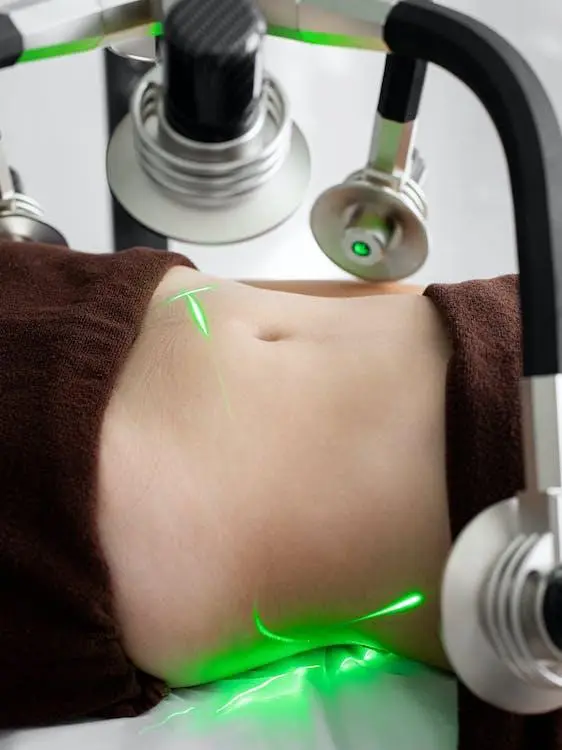
Let's talk about body contouring. Are you struggling with stubborn fat deposits around your love handles? Have you recently experienced drastic weight loss, and your body appears shabby?
In what follows, we share a detailed insight into body contouring and what the procedure involves so you can decide for yourself and maintain a great body shape.
Let’s get started.
Body Contouring – Overview
Body contouring, also known as body sculpting, refers to medical procedures (both surgical and non-surgical) that can help you reshape certain body parts. The medical procedure helps improve the appearance of an area of the body following significant weight loss from a specific part of the body and includes several treatment options that can help with the following.
- Get rid of excess skin following weight loss,
- Eliminate extra deposits of fat from underneath the skin,
- Contour or reshaping of the area following weight loss.
The primary objective of body contouring isn’t always weight loss. Instead, it revolves around improving the body's appearance, tissue, or skin following significant weight reduction. It can also enhance the underlying tissue support, which can help create a smoother body contour.
A range of surgical and non-surgical procedures can fall under body contouring. Surgical body contouring options include the following.
- Liposuction,
- Abdominoplasty,
- Brazilian butt lift,
- Arm, thigh, and body lift,
Each surgical procedure is designed to contour different aspects of the body, including buttocks, thighs, arms, back, and stomach. Surgical body contouring can also be used for facial contouring following facial surgery.
Non-surgical body contour is known as lipolysis and can include several methods, which are as follows.
- Cryolipolysis,
- Laser Lipolysis,
- Injection Lipolysis,
- Radiofrequency Lipolysis.
Why is Body Contouring Used?
As mentioned earlier, body contouring helps improve the appearance of your body by offering better tissue support which is critical after major weight reduction.
It can also help you attain a specific shape or appear thinner from a certain body section, especially for areas where restricted diet and exercise aren't making any significant difference.
Both surgical and non-surgical body contouring typically targets the following areas.
- Arms,
- Thighs,
- Flanks,
- Belly,
- Buttocks,
- Back,
- Tummy,
- Neck and Chin.
Advantages and Potential Risks Associated with Body Contouring
Body contouring offers the following benefits.
- Well-shaped, more defined body appearance,
- Contoured, thinner, and younger body outlook, and
- Improved appearance of the skin.
However, a few risks are associated with the procedure, which includes the following.
- Surgical complications like bleeding or blood clots,
- Complications associated with anesthesia,
- Potential nerve damage,
- Infection at the site of incision,
- Undesirable results from the invasive or non-invasive procedure may require repeat sessions, and
- Skin soreness, swelling, rash, or hives following a non-surgical body contouring procedure.
Body Contouring Procedure – What to Expect
Before the Procedure
Whether you opt for a surgical or non-surgical body contouring procedure, you must meet your healthcare practitioner to discuss your concern. Typically, a plastic surgeon will take care of body contouring procedures and arrange a meeting with you to discuss your objectives for the procedure. Moreover, the healthcare practitioner will also get an insight into your medical history, pre-existing medical conditions, medications, and allergies.
The healthcare professional will also inquire about details related to your consumption of alcohol, nicotine, or any other legal or illegal drugs.
Your plastic surgeon will also physically examine the area you want to reshape, measure it, and mark it for the changes you want. The professional may also take pictures for reference, discuss the possible options, and make recommendations accordingly. Your healthcare practitioner will also share the procedure details, associated risks, and post-procedure care at this point.
If you're a smoker, your healthcare practitioner may recommend you to quit smoking for at least some time. Moreover, if you're taking certain medications like aspirin or NSAIDs, your healthcare provider may recommend you to stop taking these medications as they can interfere with the procedure and post-procedure outcomes.
During the Procedure
Most surgical body contouring procedures take place at the surgical center or the hospital and may take anywhere between 45 minutes to several hours, depending on the type of procedure.
Surgical body contouring procedures involve the use of local or general anesthesia before making the incisions in the skin. Only the patient's body is numb, the procedure involving reshaping or cutting is performed. In the case of liposuction, excess fat is suctioned out, whereas muscles are tightened during abdominoplasty following the trimming of excess skin.
The surgeon then closes the incision, applies bandages to secure the incision, and prescribes post-operative medications to avoid bacterial infections.
On the other hand, non-surgical body contouring procedures can take place in the doctor’s office and can take anywhere between 30 to 60 minutes. The plastic surgeon will perform the procedure, which typically involves injecting a drug or using a tool or laser, depending upon the type of treatment. Most non-surgical body contouring procedures require multiple treatment sessions to get the desired results.
After the Procedure
Most people who undergo body contouring procedures can manage to go home the same day (even in some surgical procedures); however, post-operative care is more critical following surgical treatments. It's best to rest for a few days before you can completely resume your daily activities. Discuss your mobility, workload, and post-operative rest recommendations with your healthcare practitioner. It's best to adhere to the recovery instructions provided by the surgical team.
For non-surgical body contouring, you will typically not need someone to ride you home, and you can go about your day as usual.
Who Is a Good Candidate for Body Contouring?
Body contouring is ideal for individuals whose weight hasn’t drastically changed over the last six months. Moreover, an ideal candidate for body contouring shouldn’t be planning to lose more weight.
Individuals considering body contouring must have good overall health. Moreover, they should cease smoking at least six weeks before the surgery as smoking and the presence of pre-existing chronic conditions like diabetes or chronic heart disease can increase the risk of complications during the procedure and can slow down recovery.
Outlook
The outlook of the body contouring procedure can vary depending upon the type of the procedure and several other factors involving the procedure, the patient, and post-procedure care.
While some individuals are happy with the results, others may need to repeat the treatment to get the desired results.
Key Takeaways
Overall, it's a helpful method to contour the shape of your body and eliminate stubborn fat that doesn't go away with a workout or diet.
Before you opt for any body contouring procedure, it's best to discuss your options with your healthcare practitioner to make an informed choice.
SunCoast Skin Solutions Dermatology offices are located in Tampa / Hillsborough, St. Pete / Pinellas County, Brandon, Lutz, Winter Haven, Largo, Hudson, Leesburg, Riverview, Brooksville, Clearwater, Ocala, Palm Harbor, Daytona Beach, Sarasota, Punta Gorda, Seminole, Florida. Contact us at 1-844-786-3376 or click here.

Recent Comments